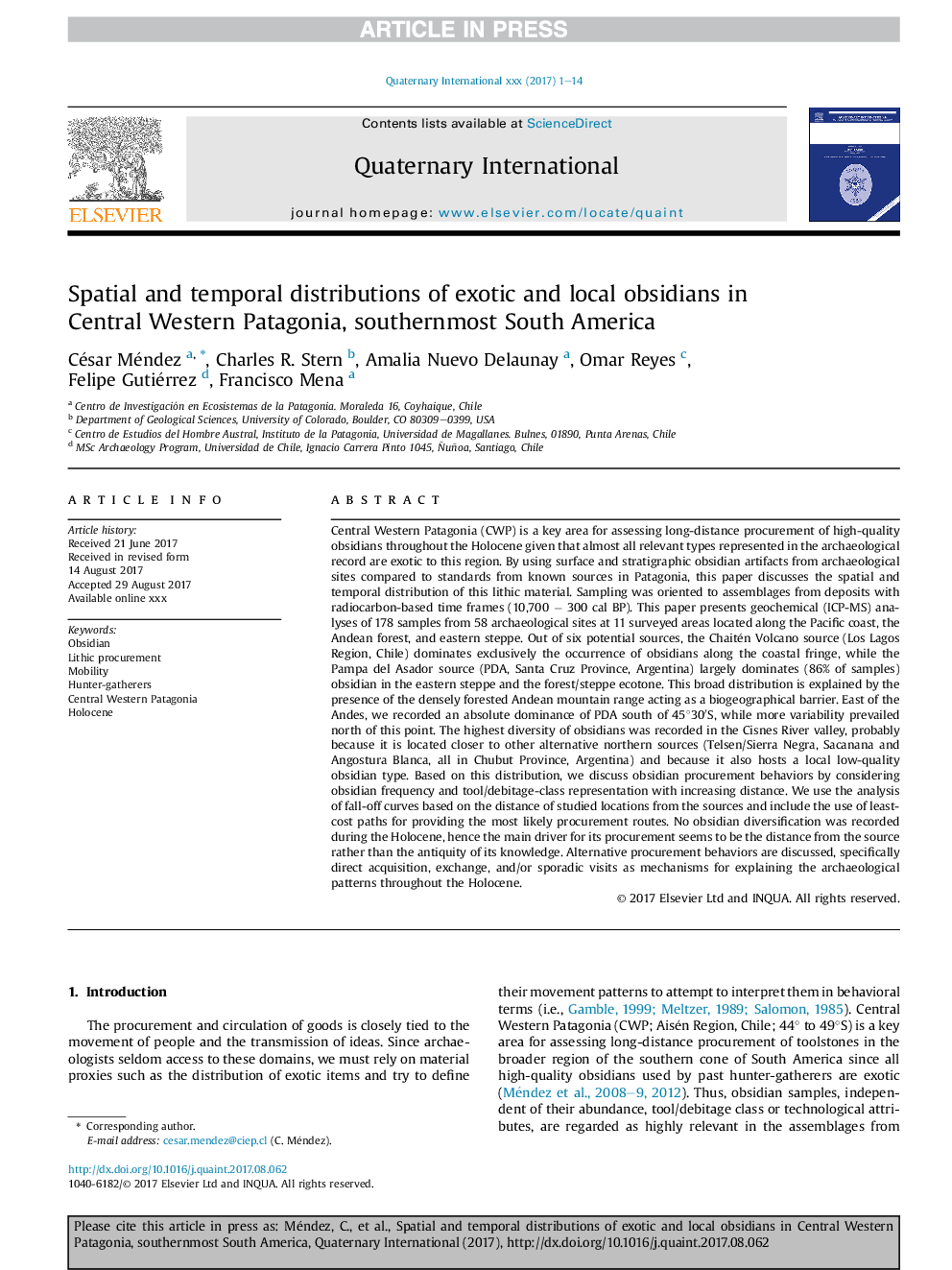| کد مقاله | کد نشریه | سال انتشار | مقاله انگلیسی | نسخه تمام متن |
|---|---|---|---|---|
| 7450455 | 1484050 | 2018 | 14 صفحه PDF | دانلود رایگان |
عنوان انگلیسی مقاله ISI
Spatial and temporal distributions of exotic and local obsidians in Central Western Patagonia, southernmost South America
ترجمه فارسی عنوان
توزیع فضایی و زمانی از ابدیان عجیب و غریب و محلی در غرب پاتاگونیا مرکزی، جنوب امریکا جنوبی
دانلود مقاله + سفارش ترجمه
دانلود مقاله ISI انگلیسی
رایگان برای ایرانیان
کلمات کلیدی
وسیدین، خرید لیت، تحرک، شکارچیان، پاتاگونیا غربی مرکزی، هولوسن،
موضوعات مرتبط
مهندسی و علوم پایه
علوم زمین و سیارات
زمین شناسی
چکیده انگلیسی
Central Western Patagonia (CWP) is a key area for assessing long-distance procurement of high-quality obsidians throughout the Holocene given that almost all relevant types represented in the archaeological record are exotic to this region. By using surface and stratigraphic obsidian artifacts from archaeological sites compared to standards from known sources in Patagonia, this paper discusses the spatial and temporal distribution of this lithic material. Sampling was oriented to assemblages from deposits with radiocarbon-based time frames (10,700 â 300 cal BP). This paper presents geochemical (ICP-MS) analyses of 178 samples from 58 archaeological sites at 11 surveyed areas located along the Pacific coast, the Andean forest, and eastern steppe. Out of six potential sources, the Chaitén Volcano source (Los Lagos Region, Chile) dominates exclusively the occurrence of obsidians along the coastal fringe, while the Pampa del Asador source (PDA, Santa Cruz Province, Argentina) largely dominates (86% of samples) obsidian in the eastern steppe and the forest/steppe ecotone. This broad distribution is explained by the presence of the densely forested Andean mountain range acting as a biogeographical barrier. East of the Andes, we recorded an absolute dominance of PDA south of 45°30â²S, while more variability prevailed north of this point. The highest diversity of obsidians was recorded in the Cisnes River valley, probably because it is located closer to other alternative northern sources (Telsen/Sierra Negra, Sacanana and Angostura Blanca, all in Chubut Province, Argentina) and because it also hosts a local low-quality obsidian type. Based on this distribution, we discuss obsidian procurement behaviors by considering obsidian frequency and tool/debitage-class representation with increasing distance. We use the analysis of fall-off curves based on the distance of studied locations from the sources and include the use of least-cost paths for providing the most likely procurement routes. No obsidian diversification was recorded during the Holocene, hence the main driver for its procurement seems to be the distance from the source rather than the antiquity of its knowledge. Alternative procurement behaviors are discussed, specifically direct acquisition, exchange, and/or sporadic visits as mechanisms for explaining the archaeological patterns throughout the Holocene.
ناشر
Database: Elsevier - ScienceDirect (ساینس دایرکت)
Journal: Quaternary International - Volume 468, Part A, 27 February 2018, Pages 155-168
Journal: Quaternary International - Volume 468, Part A, 27 February 2018, Pages 155-168
نویسندگان
César Méndez, Charles R. Stern, Amalia Nuevo Delaunay, Omar Reyes, Felipe Gutiérrez, Francisco Mena,
